- Home
- Equipment Reviews
-
Amplification Digital Integrated Mono Block Preamplifier Phono Solid State Tube Analog Sources Cartridges Tape Tone Arms Turn Tables Digital Sources Digital Disc Players DACs Music Servers Streaming Music Services
-
Accessories Power Conditioners Room Accoustics Racks & Stands Audio Software Other iPod iPod Speakers iPod Headphones iPod Transports Headphones Over Ear On Ear In Ear Headphone Amplifier
-
- Audio News
- Event Reports
- California Audio Show, San Francisco
- Consumer Electronics Show
- T.H.E. Show
- Rocky Mountain Audio Fest
- AXPONA
- Salon Son & Image
- Hi-Fi Show & AV Expo
- High End
- Lone Star Audio Fest
- Capital Audio Fest
- TAVES - Toronto Audio Video Entertainment Show
- AK Fest
- Home Entertainment Show
- New York Audio $ AV Show
- Open House Events
- Spotlight
- Music
- The Columns
- 2024 California Audio Show
Latest Reviews & Audio News
-

PS Audio AirLens and DirectStream DAC Mk2 Review
(July 26, 2024) -

Audio Note UK Meishu Tonmeister 300B integrated amplifier, P3 Tonmeister stereo amplifier, M6 Phono Balanced Preamp Review
(July 12, 2024) -

Douglas Schroeder’s One Year Exploration of Digital Front End Systems
(June 25, 2024) -

Arya Audio Labs RevOpods Anti-Vibration Feet Review
(June 25, 2024) -

Lego Icons Retro Radio Review
(June 14, 2024) -
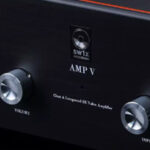
SW1X Audio Design AMP V “Titan” Special directly-heated triode integrated amplifier Review
(June 14, 2024) -
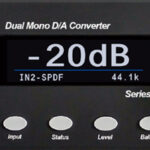
Bricasti Design Model 1 Series II D/A Converter and M5 Network Player Review
(May 24, 2024) -

Star Wars – The Empire Strikes Back – In Concert, May 2, 2024
(May 20, 2024) -
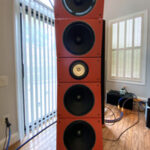
PureAudioProject Quintet15 with Voxativ AC-X field-coil open-baffle loudspeaker system Review
(May 20, 2024) -
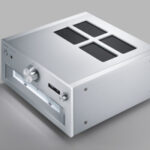
Technics SU-R1000 reference stereo integrated amplifier Review
(May 20, 2024) -
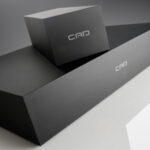
Computer Audio Design GC 1.1 & GC3.1 Ground Control external grounding systems Review
(May 20, 2024) -

Andy Grove of Audio Note UK on IO LTD
(March 23, 2024) -
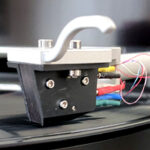
Audio Note UK IO Limited field-coil cartridge system Review
(May 20, 2024) -
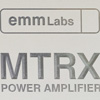
EMM Labs MTRX monoblock Input Board Upgrade Review
(March 7, 2024) -

May 2018 Sibelius Violin Concerto concert video via Berliner Philharmoniker Digital Concert Hall app
(February 16, 2024)
-
Categories
-
Amplification Digital Integrated Mono Block Preamplifier Phono Solid State Tube Analog Sources Cartridges Tape Tone Arms Turn Tables Digital Sources Digital Disc Players DACs Music Servers Streaming Music Services
-
Accessories Power Conditioners Room Accoustics Racks & Stands Audio Software Other iPod iPod Speakers iPod Headphones iPod Transports Headphones Over Ear On Ear In Ear Headphone Amplifier
Site Sections
Copyright ©1996-2024 All Rights Reserved.
Popups Powered By : XYZScripts.com

I have written a series of articles under the heading of Psychological Art Perspectives, and have based them on a succession of interviews I conducted with various artists from different genre. A few of the artists I have actually worked with in the past, and others were people whom I met throughout the years, and several I specifically approached for the purpose of the articles. For the most part, my direction with the interviews was a straight culmination of information and an individual look at the psychological approach or take on things in the creative process of each artist when set in a project. This next perspective piece is in response to the working procedure used by a very talented and unique contemporary/classical guitarist in the composing, and studio recording process.
On the day before a studio recording session for a personal CD project of original material, as well as one classical selection, I was talking with the artist of their composing procedure.
They said that in being a trained classical guitarist, one of the consistent challenges in writing contemporary material for the instrument was the fact that most listeners are used to hearing the instrument in a classical music or flamenco setting. It usually blended with an orchestra and was rarely heard in an electronic environment. With that early background of the guitar being the initial attraction for this artist, they also studied in modern pop, jazz, country, and a myriad of other schools of music. This artist says, however, that they were inclined to utilize the nylon classical six-string guitar exclusively for their use.
I won’t try to describe the original sound of the material they compose because I couldn‘t complement its uniqueness properly, but I will say that it is very ambient and precise in it’s tonal texture. It could even be considered somewhat ‘electronic’ in it’s presentation. They start with a set (whatever the number) of composed pieces (which they mentioned “kind of evolve thematically with story ideas in their head”, like a score for each story, and then they score them on paper until they have the desired number of pieces they want for that particular project). “Of course it’s totally different when playing and recording set classical pieces written for the instrument.”
Once in the recording studio this artist says, “I pretty much separate myself into two categories. One being the guitarist / composer, and the other a sound-effects producer who just happens to be using a nylon string acoustic guitar”. The results are interesting indeed, and there is an extremely sharp & precise sound quality to the recordings that has its own edge. There are many subtle nuances as well as bold, even sonic, types of sounds in this material, something that I am sure can be heard exceptionally well with the highly accurate and unique sound systems the DAGOGO readers employ for themselves. Usually working with one or two engineers (they produce their own original material), and a preference for a specific studio here or there, this particular artist has been able to attain an original sound and sustain a high standard for himself; as well to have a following enough to continue composing, recording, and working for others in the classical field.